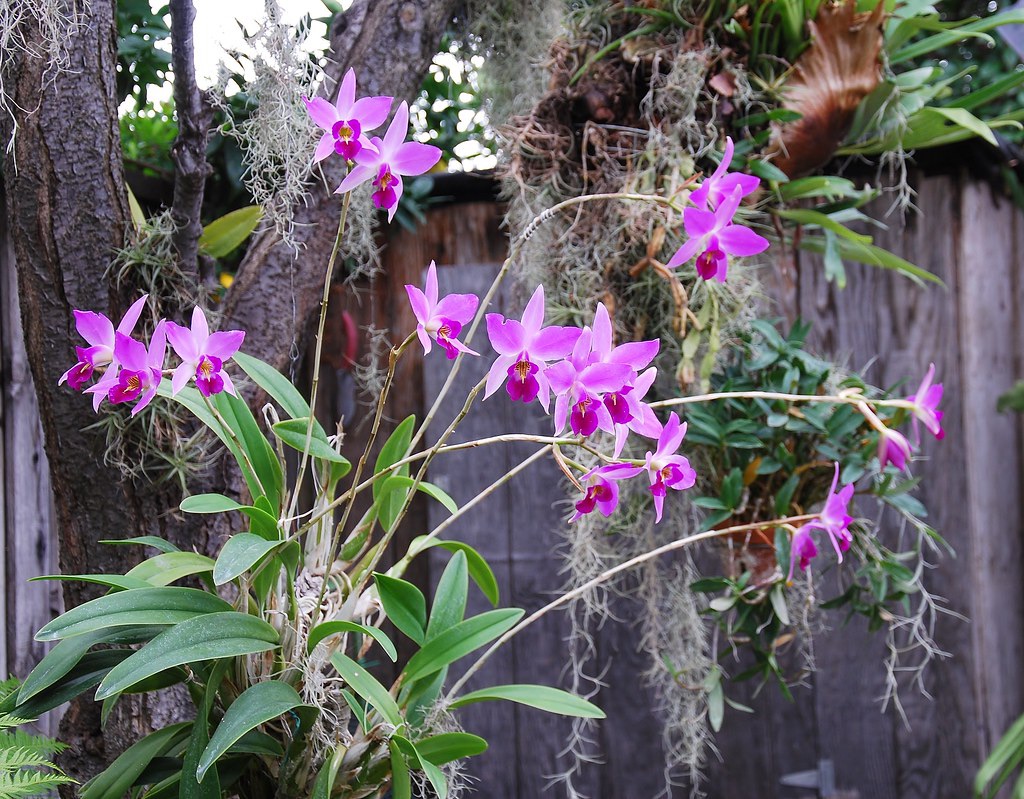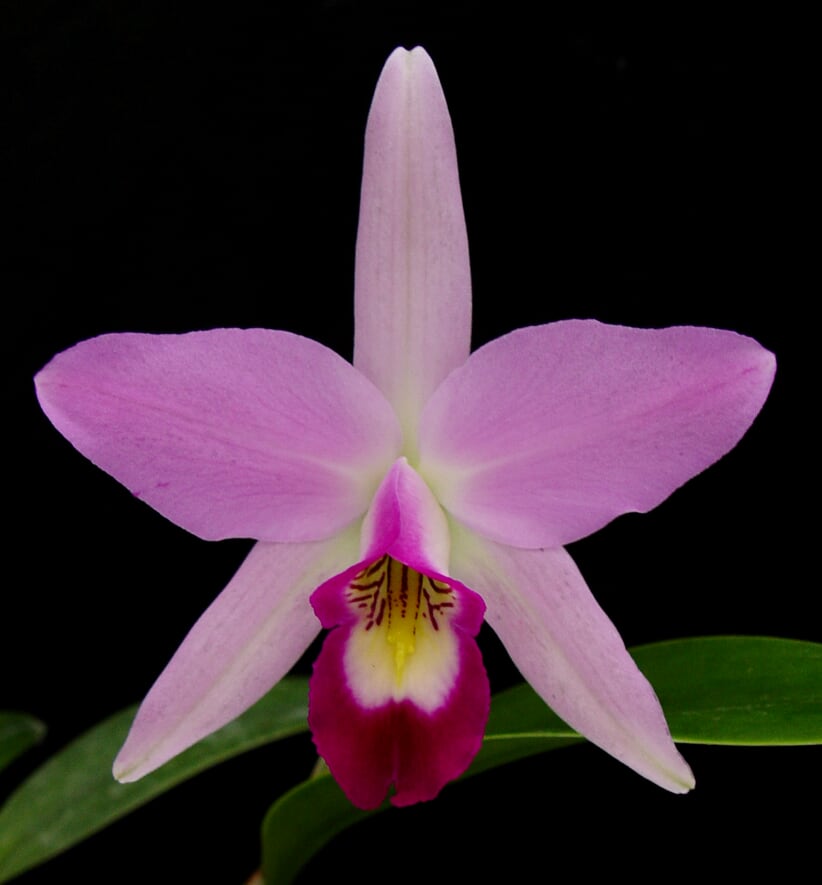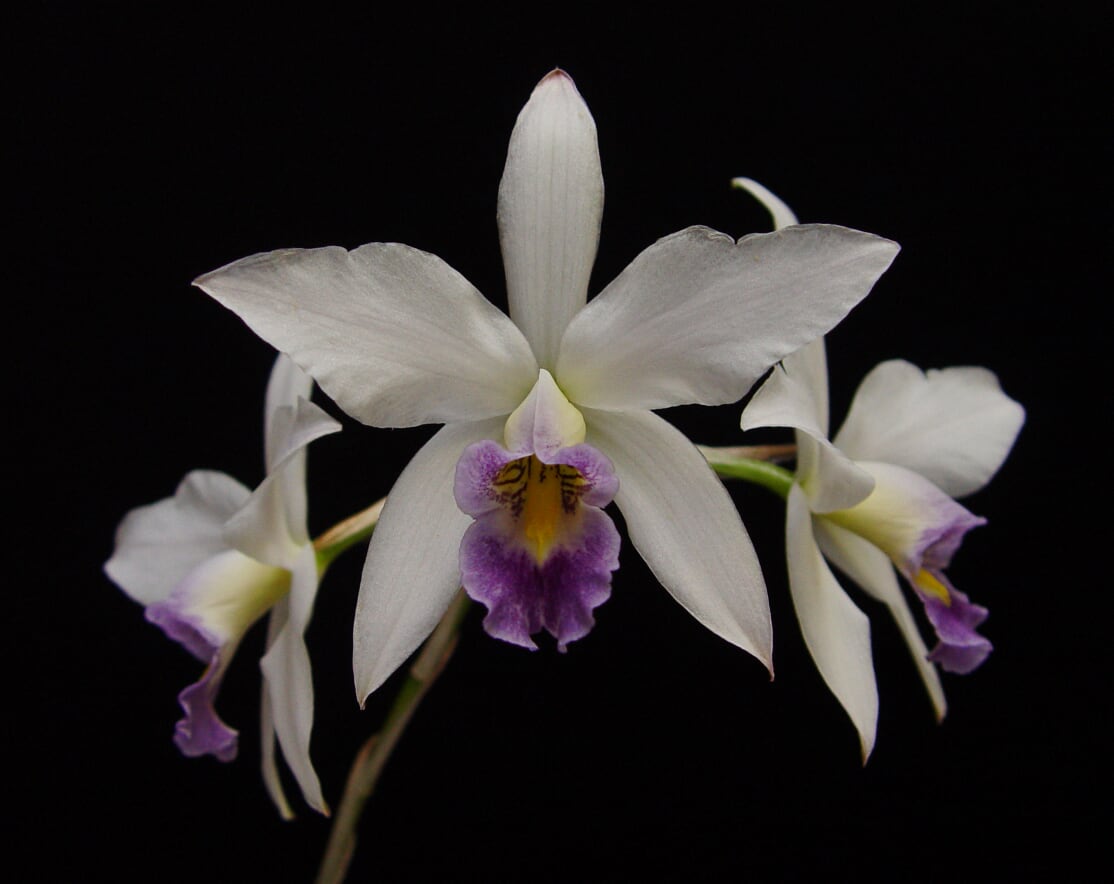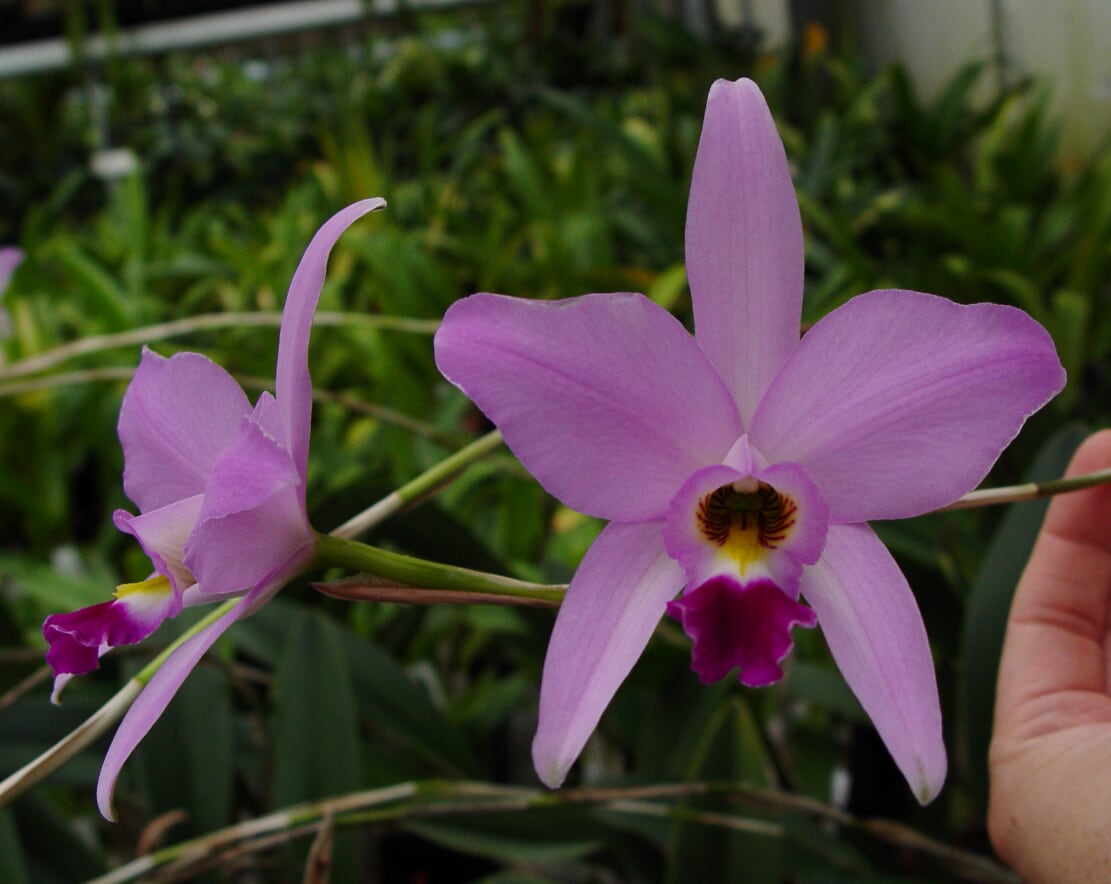Laelia anceps, the choice for beginner and expert growers!
Posted by Jason Fischer on Oct 22nd 2019
It is the time of year again when the Laelia anceps are coming into spike (October), so I thought it would be noteworthy to review this very easy-to-grow Mexican species that is great for beginners and orchid connoisseurs alike! I recommend ordering these plants in the month of October when the stems are still relatively short, as when they reach 3 to 4 feet tall, not only is it more challenging to ship (risk of spike breaking in shipping), but it also costs much more because of the increase in box size!

Photo above provided by our friend Matt Bond, who is an avid Cattleya grower in Southern California.
Laelia anceps is an epiphytic orchid in the Cattleya Alliance group. It mostly grows on oak trees in the wild (occasionally found on rocks as well), and in hobby culture grows best in a bulb pan pot, or on a large piece of cork or manzanita branch. This plant will require some space, but can also be cut back or divided to sustain its size. Typically, they will flower with 3 to 4 pseudobulbs developed (usually starting in a 5 to 7-inch container), and have rather tall stems ranging from 2 to 4 feet tall. When grown in very bright light, the stems can often shorten in length.

These plants are very fast to take root and push new growth as well, and can grow in many different materials when potted. Typically, we use Orchiata pine bark mix, but they can also grow in sphagnum moss if your environment is very dry, though you will have to repot it once a year if you grow in sphagnum. If you live in an area with high humidity, they can also grow like Vandas and be placed into a basket, or even an empty pot, bare root. Each growth spaces itself out from the previous one by 1 to 3 inches, and when making divisions it is best to have a minimum of three mature growths.

If there’s one important thing to provide anceps with, it is light. Lots of light. In the wild these have been found growing in full sunlight, though that is not necessary for success. Medium- bright to bright light (like Cattleya, yet even more tolerant of bright light) is what will help these grow and flower best.
Laelia anceps have a variety of different color types and shapes. We have recently made cuttings of many large plants in our collection and have been listing them on the website. Some ship bare root and some in pots. Most will produce 2 to 6 (2 to 3 on average) flowers on a single and tall 2 to 4-foot stem.

Perhaps one of the most interesting things about Laelia anceps is its sheer tolerance for temperature extremes. They have been known to survive evenings in the 20s, and daytime highs of up to 100+ degrees! This temperature range allows these plants to be mounted on trees outside where the weather permits, such as Southern California and Florida. When growing in pots, it is best to use very well-draining media such as medium to large bark, charcoal, or hydroponic clay balls. Or, as mentioned before, nothing at all if you have good humidity or a daily water schedule.
In conclusion, if you’re looking for an orchid that boosts your confidence as a good grower, look no further. This is one of those plants you just put on the shelf and let it do its thing. It will reward you with new growths and flowers, every year!
For beginners, we have a general Laelia anceps product page that we recommend, we choose the plant, the color and shape may vary slightly.
Click here to view our Laelia anceps selection to see specific types.
Please note: Many of our Laelia anceps are sent "bare root", which means we wrap sphagnum moss around the roots in a plastic bag but do NOT include a pot. Laelia anceps have large pots which can greatly raise shipping, so this allows for a cheaper option.
Happy Growing,
Jason Fischer

